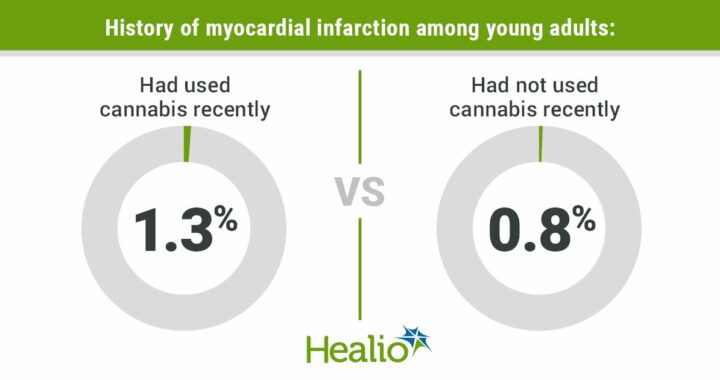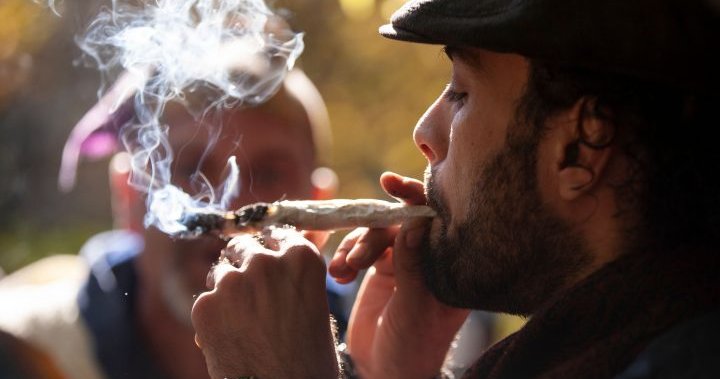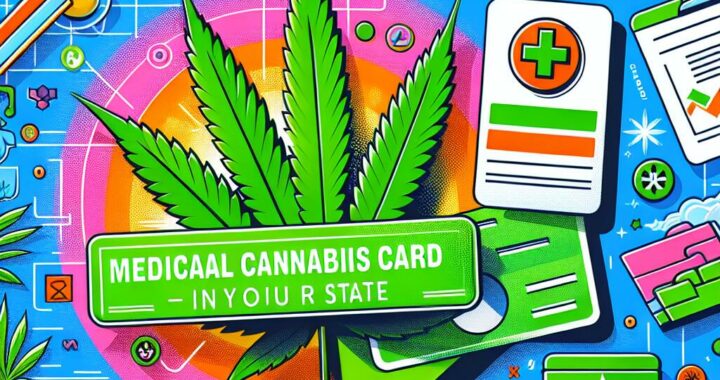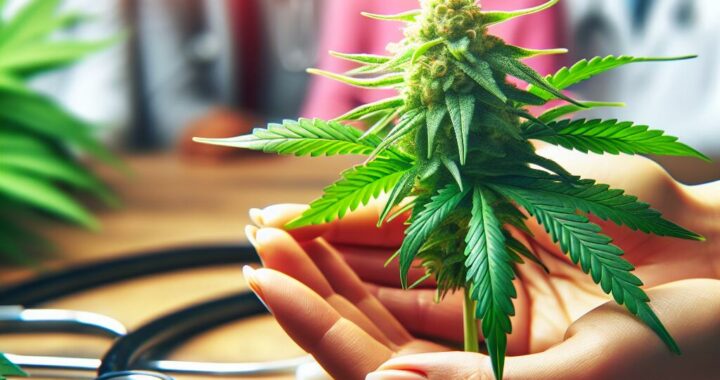Editorial Roundup: Texas :: WRAL.com
15 min read
Dallas Morning News. Aug. 13, 2021.
Editorial: Texas hospitals are facing a COVID-19 disaster. Gov. Abbott must act
Babies hooked to ventilators. Overflow tents pitched outside of hospitals. Parents fretting that sending their kids to school might become an intolerable risk.
It’s surreal to write this. Just a few months ago we were celebrating Parkland Hospital’s closing of its COVID-19 intensive care units in Dallas. We noted that Gov. Greg Abbott was right to reopen Texas in the spring, as COVID-19 case numbers slumped and vaccines became widely available in the weeks that followed.
Now comes a disastrous turn. A plateau in vaccination rates and the more contagious delta variant were just the recipe to send cases skyrocketing again. The Dallas-Fort Worth region has swung from a low of 289 hospitalizations in June to more than 2,600 as of Thursday, seemingly on a trajectory to hit numbers we last saw in January, when we peaked at more than 4,100 hospitalizations. Also as of Thursday, our 19-county trauma service area had no pediatric ICU beds left.
State data show that every trauma service area in Texas is experiencing an exponential rise in COVID-19 hospitalizations, even though those hospitalizations in some regions had sunk to single digits just months or weeks ago. Texas is in crisis again, but we don’t have clear leadership to attack the problem. It’s our governor’s responsibility to lead.
Court battles about who’s in charge will drag out the chaos. Abbott can wait for judges to sort out whose executive order trumps whose, or he can be the leader Texans need. We call on the governor to convene regularly scheduled meetings with the county judges from the state’s major metropolitan areas and work out a consensus plan to tackle the COVID-19 surge. Individual freedoms should be part of the discussion, but the difficulty is that it’s hard to untangle individual liberty from public health. Stemming community spread of a virus that’s causing a pandemic also enhances personal freedoms by both reducing public pressure for restrictive precautions and shielding individuals from illness. Recognizing this, we hope leaders at all levels forge a working relationship to address the rise in COVID-19 cases.
County judges need to join the governor. All of them should leave party politics behind and honestly discuss how the state can implement public health measures that will lower the spread of the disease.
No one should expect to get all they want. In Dallas, we are stuck between County Judge Clay Jenkins’ sweeping order on masking and Abbott’s laissez-faire maskless plan.
It doesn’t have to be this way. There are areas of obvious middle ground — beginning with schools.
The onus for leadership falls first to the governor, however. He has preached personal responsibility, though that is plainly not enough to stop the rise in serious infections showing up in our hospitals.
The consensus is that it’s better for children to learn in school than remotely, but children under 12 can’t get the vaccine yet. Wearing a mask is an imposition, and we understand why it’s frustrating to see such mandates make a return. However, we must reject attempts to turn public health guidance into a political grenade.
The best thing for all of us is to get COVID-19 under control again. We’re grateful that Abbott has a plan to recruit more health care workers to assist strained hospitals, but what we need is to curb the spread of the disease. That will involve masks and doing even more to encourage more people to get vaccinated.
On Thursday, nearly half of North Texas’ ICU beds were occupied by patients with COVID-19, and only 75 ICU beds — about 5% of the intensive care capacity in the region — were open. Every occupied bed is a Texan, every hospitalization a disaster for a Texas family. This could be a disaster for the governor, too, if he doesn’t work with local leaders to stem the flow of patients.
___
Houston Chronicle. Aug. 15, 2021.
Editorial: Houston will be a leader in the climate change transition – or a casualty
Historians have pondered over the years whether it takes a war for a president to be ranked among the greats. It’s a debatable proposition, of course, and yet wartime presidents usually head the list. That’s why President Theodore Roosevelt was consumed with envy that Woodrow Wilson, the man to whom he lost in 1912, was in office during World War I.
At the state and local level, elected officials don’t conduct wars, but their reputations usually are made by how they respond to crisis, often natural disasters. Today, elected officials at every level are serving at a time of two major crises — a shape-shifting, worst-in-a-century pandemic and, as we learned from a troubling new United Nations report last week, the increasingly urgent crisis of global warning. (Teddy Roosevelt should have been so lucky.)
With Texas at the epicenter of both crises, state officials are failing to respond. In the battle against COVID-19, a pandering governor more concerned about his re-election prospects is actively thwarting mayors, county judges and school officials who are desperately trying to contain the spread. On climate change, he reflexively, and lucratively, panders to the all-powerful oil and gas industry. That’s not “wartime” leadership from Gov. Greg Abbott.
Instead of trying to curtail voting in Texas, instead of hindering the work of local officials combating COVID, Abbott could have been reading last week’s report on the devastating impacts of climate change. It deserves more attention than it has received. The 4,000-page document from the Intergovernmental Panel on Climate Change, a U.N. affiliated scientific group, concludes that we cannot escape some of the devastating effects of climate change — extreme drought, severe heat waves, catastrophic flooding, to name a few — but we still have a narrow window of opportunity to curb the most drastic potential effects.
We know why it’s happening; we know who’s responsible. “It is unequivocal that human influence has warmed the atmosphere, ocean and land,” the report says in its summary for policymakers. “Human-induced climate change is already affecting many weather and climate extremes in every region across the globe.”
We also know what to do, but we are running out of time to do it. Each of the past four decades have been successively warmer than the previous one. Last month was the hottest month ever recorded on Earth, the National Oceanic and Atmospheric Administration declared last week.
Heat waves on land have become significantly hotter since 1950 and oceanic heat waves that are devastating to marine life have doubled in frequency during the past 40 years. The rate of sea-level rise has doubled since 2006. All of these developments are already affecting our daily lives, our health, our well-being.
No matter what steps we take, drastic or otherwise, we are in for at least three decades of worsening climate impacts. Other impacts will continue far into the future. The enormous ice sheets at both poles will continue to melt at least through the end of the century. The rate of sea-level rise will continue to increase for centuries.
Environmentalists have struggled for years to find a way to jar governments, industry and individuals into action without inducing abject surrender. Given the immensity of the challenge, governments — and individuals, for that matter — are particularly good at avoidance. It’s easy to distract, postpone, delude. And yet if we fail to act, “the hellscape we leave to our grandchildren will be unrecognizable,” Washington Post columnist Eugene Robinson warns. That’s not hyperbole.
Houston, the energy capital of the world, a city that employs nearly a third of the nation’s jobs in oil and gas extraction and is home to headquarters for virtually every segment of the fossil fuel industry, must play a leading role.
We cannot meet the global warming challenge without drastic industry changes. Government at all levels must apply the pressure for transitioning to green energy (with support from consumers). While carbon capture technology is a step in the right direction, American companies can’t make it their sole approach. Our Energy Corridor neighbors must diversify their portfolios by investing in renewable energy rather than relying on emerging technologies to largely buttress their current business models.
A recent report from the International Energy Agency found that in 2020, the oil and gas industry as a whole spent just 1 percent of capital expenditures outside their core business areas on clean energy.
Climate-change activists celebrated key victories earlier this year, including the replacement of three Exxon Mobil board members with activist shareholders — a direct challenge to the company’s oil-centric portfolio. They also applauded a ruling from a Dutch court ordering Royal Dutch Shell to lower emissions. Despite their excitement, there’s this reality: Unless governments and consumers around the world make dramatic changes — triggering a rapid shift in corporate plans — oil and gas companies aren’t on track to shift their investments as rapidly as analysts insist the planet requires.
The industry contends that cutting production too early — before the world’s demand for oil has actually decreased — would send prices skyrocketing and leave companies scrambling to provide sufficient supply. To avoid the worst of these consequences, demand must be curtailed through massive changes in the way we live. Namely, generous investments in renewable power, widespread adoption of electric vehicles, and, of course, the political will and international cooperation to make the necessarily disruptive policy changes.
If we’re looking for good news in these apocalyptic times, it could be that what’s good for the planet is also good for the bottom line. A few weeks ago, the Greater Houston Partnership presented a blueprint for positioning Houston as the nation’s Energy Transition Capital. The 15-page strategy document lays out a stark economic choice for the region: Either Houston takes a “business as usual” approach, resulting in the loss of approximately 270,000 jobs (on top of 125,000 jobs lost in the oil and gas sector since 2014), or the city takes the lead in the energy transition. The latter approach likely would bring between 400,000 and 560,000 new jobs to the area, with annual revenue approaching $210 billion.
“The global energy transition can either be viewed as a huge threat or as an extraordinary opportunity for Houston,” said GHP President and CEO Bob Harvey at an energy transition conference in June. “We choose to view this as a tremendous opportunity to enhance the long-term economic future and global competitiveness of Houston.”
Mayor Sylvester Turner seems to agree. As chair of Climate Mayors, a bipartisan coalition of nearly 500 city executives banding together on climate change action, Turner has been at the forefront of Houston’s energy transition. Last year, while Abbott was downplaying electric grid concerns and falsely blaming solar and wind energy for the winter storm blackout, Turner was releasing Houston’s first Climate Action Plan and resilience strategy, as well as committing all municipal facilities to 100 percent renewable energy, making the city the largest green power user of any local government, according to the Environmental Protection Agency.
Progress hasn’t been perfect: municipal emissions make up only 6 percent of community-wide emissions. It will take a lot more partnerships and, advocacy at the federal and state level to even dream of reaching Paris Agreement targets.
Meanwhile, Europe may have hit its hottest temperature on record one day last week — 119 degrees on the island of Sicily. More than 150 million Americans were under some form of heat alert. Fires raged around the world. With or without an eager Teddy Roosevelt, we already are at war.
___
Weatherford Democrat. Aug. 14, 2021.
Editorial: : The issue
Gov. Greg Abbott’s political aspirations appear to outweigh his sense of duty to protect Texas’ children.
We need to look no further than the Republican politician’s order banning mask mandates by any school district, government body or taxpayer-funded public or private entity for evidence of his blatant misplacement of his political agenda above the wellbeing of Texans.
Such a rejection of public health officials’ best efforts to combat the ongoing surge of COVID-19 infections — a wave that now threatens to overrun hospitals in all corners of the Lone Star state — is a wholesale dereliction of his duty to protect Texans, especially children.
Instead of stepping into the political wind to shield our children, Abbott has thrust students into the position of cannon fodder in his fight for political profile.
It’s a repugnant move considering the governor was one of the first Texans to receive a vaccine to protect against the pandemic virus. Think about that for a moment, a guy who has enjoyed relative protection from serious illness from the virus since December thanks to his position of privilege has set policy that rejects masks for our students. Our children.
That political game is playing out as children younger than 12 are the one group not yet under the vaccine umbrella in the midst of a COVID-19 hurricane. They also comprise more than half of students enrolled in Texas schools.
Couple that with state policies that installed disincentives for remote learning and diluted requirements for tracking outbreaks in schools and we have a recipe for disaster.
The governor’s stubborn rejection of common sense as children flood back into classrooms for a new school year plays out as health experts track alarming increases in the number of young people falling ill. The American Academy of Pediatrics logged more than 93,000 cases of COVID-19 in children during the week that ended Aug. 5. That’s 15 percent of all new diagnoses of the disease that week nationwide, and a steep rise in children becoming ill.
That unneeded, misguided obstacle Abbott created already faces court challenges by a number of the state’s largest school districts, but what happens to the smaller, rural ones, the ones without cash reserves to fund lawsuits?
Well, we have heard from them, and they say they’re hogtied.
“I think masks are critical for our school district, but the governor has kind of forced our hand,” said JT Lagnley, a Huntsville ISD trustee. “For the safety of the people in this school district we need to highly recommend that everyone wears a mask.”
Children may be less susceptible to serious illness or hospitalization than older adults, but both public health experts and school leaders astutely point out that those young people will carry the infection home to parents, grandparents and other medically vulnerable family members.
So, instead of heeding the guidance of experts, science or even his own privileged experience, the governor has forced school leaders who want to do what’s best for the children they serve to sue his administration for the right to protect students without the threat of retaliation from state bureaucrats.
We sure think our children’s health should take priority over politics, we just hope Abbott begins to feel the same before it’s too late.
___
The (Harlingen) Valley Morning Star. Aug. 12, 2021.
Editorial: Going backward: Lawsuits begin to fight voter restriction efforts
Cameron County is one of several that have been sued over their rejection of electronic signatures for voter registration cards. The local application is incidental, as the issue affects every voting district in the state.
The issue is the state’s requirement that voting credentials contain “wet ink” signatures. Under current election procedures, voters present their voter cards to a precinct worker and sign a roster of voters. The worker compares the signatures as part of the voter verification process.
This step, however, virtually precludes the state from utilizing modern technology such as electronic voter registration.
Lawmakers charged with addressing state voting laws in the current special legislative session should recognize the need to move toward, rather than away from, advancing technology.
Electronic registration actually is permitted in this state. However, during the recent regular session, the Legislature passed House Bill 3107, an unnecessary and restrictive law that requires new voters to provide an hard-copy voter registration form with an original signature within four days of electronic registration. How this affects those who register as part of normal transactions at driver’s license offices and other public venues is unclear, but it appears to render electronic applications invalid without delivery of the physical document, and therefore redundant.
The lawsuit by Vote.Org alleges the requirement for the signature violates the First and 14th Amendments as well as the Civil Rights Act of 1964. The Texas Democratic Party has filed a separate federal lawsuit against the state, challenging the “wet signature” requirement.
State law already recognizes the validity of electronic signatures. The Legislature in 2001 enacted the UETA Electronic Transactions Act that gives electronic signatures legal force, and all contracts containing electronic signatures are considered valid.
Electronic signatures by public officials including court judges also are deemed legitimate.
“If a law requires a record to be in writing, an electronic record satisfies the law. … If a law requires a signature, an electronic signature satisfies the law,” the State Code provides.
As a practical matter the practice of comparing signatures itself is growing less necessary even as the state seeks to place more hurdles before voters. New legislation requires voting records to include state-issued ID or driver’s license numbers as well as voters’ Social Security numbers. Any of these also can be compared, as well as the physical photo ID that also is required. Each of these makes actual signatures mere overkill.
We trust that the litigants will be able to show that other states’ elections function just fine without the need for actual signatures, and that the courts will agree that modern technology makes the requirement unnecessary.
Better yet, we hope our representatives in Austin will realize that they can’t stop progress, and learn to incorporate electronic registration into our voting procedures, as other states already have been able to do.
___
Abilene Reporter-News. Aug. 12, 2021.
Editorial: State’s expansion of program wise extension of compassion
Way back in the spring when the Texas Legislature still had a quorum, one of the items addressed an ultimately approved was a modest expansion of the state’s Compassionate Use Program.
For the most part, conversations along these lines become worries about the slippery slopes of legalizing or decriminalizing the use of marijuana. There are valid points to be made and considered on each side of that debate. This is something else, though, and there is no disputing the positive impacts of regulated marijuana use in the very narrow medically related areas currently allowed under state law.
On Sept. 1, those eligible under the Texas Compassionate Use Program will expand to include people with post-traumatic stress disorder and cancer of all stages. House Bill 1535 paved the way for this, allowing the use of what is termed “low-THC cannabis.”
In addition to increasing the number of people eligible to participate, the law doubles the percent of THC allowed in products to 1%, which is less than the 5% included in the original version of the bill. It marks the second straight session during which lawmakers have expanded the program. In 2019, it grew to include those suffering from Alzheimer’s and Parkinson’s diseases.
This is a careful and thoughtful expansion of a program intended to provide people with one more option. Texas is one of three dozen states that allow the use of medical marijuana, according to the National Conference of State Legislatures.
The inclusion of PTSD will provide a path for veterans who experience the condition because of their military service. Statistics suggest the PTSD rate among veterans who served in Iraq and Afghanistan is approximately 13.5%. Some studies put the figure much higher.
Cancer patients, meanwhile, can benefit from medical marijuana as it eases various impacts of chemotherapy. According to experts, Tetrahydrocannabinol (THC) is what causes the psychological effects of marijuana.
Marijuana “decreases the hyperarousal and hypervigilance of veterans,” Dr. Muhammad Assad, a psychiatry fellow at the Texas Tech University Health Sciences Center, said in an interview with the Texas Tribune. “Because they’re coming from a traumatic situation, they get very vigilant, they get very aroused, they’re always ready for challenges. So the medical marijuana calms them down. It also decreases nightmares.”
According to the Tribune, the cannabis program served fewer than 6,000 people as of May. The expansion that will take effect in a few weeks is expected to include not only veterans but also an estimated 114,000 people across the state with cancer, per numbers provided by the Texas Department of State Health Services.
Expanding the program should also help keep Texans from traveling to other states with broader medical marijuana programs. “Because (the program) was so narrow for so long, many patients were forced to go to the neighboring states around Texas that have robust medical programs to gain access to the plant,” Jax Finkel, executive director of the Texas chapter of the National Organization for the Reform of Marijuana Laws, told the Tribune.
The Compassionate Use Program is a controlled medical option available only to those who meet specific criteria. This latest expansion is a good idea that opens the program’s door to more patients likely to reap the program’s benefits
END








 Protected by Patchstack
Protected by Patchstack